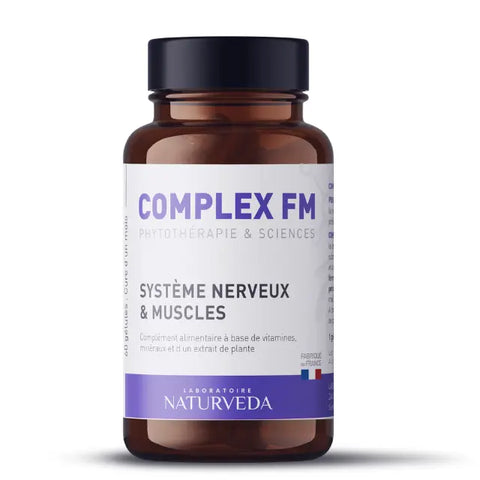6 products
Joint Pain and Fatigue: Causes, Consequences and Solutions
Are you feeling tired and your joints are giving you pain? You are not alone. Joint pain and fatigue can be symptoms of a variety of medical conditions and can have a significant impact on your quality of life. In this article, we will explore the causes, impacts, and treatments for these symptoms, as well as ways to naturally treat and live with them.
What is joint pain and fatigue?
Joint pain and fatigue are very common complaints among adults. Painful joints can result from a variety of conditions, including arthritis, tendonitis, bursitis, and several other diseases. It is typically characterized by pain, swelling, or stiffness in one or more joints.
Fatigue, on the other hand, is a feeling of constant exhaustion and lack of energy, rather than just sleepiness. Sometimes, joint pain and fatigue can coexist, often exacerbating the feeling of discomfort.
What are the causes?
Joint pain and fatigue can have several causes. Some factors could be related to your lifestyle, and others could be related to an underlying medical condition. Let’s look at these factors in more detail.
Medical conditions
Rheumatological conditions such as rheumatoid arthritis or osteoarthritis are common causes. In these cases, the immune system attacks the body's joints, causing pain and fatigue.
Fibromyalgia , a chronic condition characterized by widespread musculoskeletal pain and severe fatigue, can also cause these symptoms.
Fibromyalgia is a mysterious and complex disease that affects approximately 2 to 6% of the world's population. It is more common in women than in men. It is characterized by constant pain in various parts of the body, associated with persistent fatigue . Unfortunately, its exact cause remains unknown. Several hypotheses have been put forward, including sleep disorders, stress or even genetic factors.
Chronic pain from fibromyalgia can be intense and can feel like burning, pulling, or aching. It is often spread throughout the body . Fatigue, on the other hand, is not ordinary tiredness. It is a deep, constant exhaustion that is not relieved by sleep or rest.
Fibromyalgia can also be accompanied by other symptoms. For example, sleep, mood or concentration problems, or even recurring headaches. It can greatly affect quality of life, making daily tasks difficult to accomplish and greatly reducing the ability to work or participate in social activities.
Biochemically, it has been observed that this disease is often associated with a disturbance in the metabolism of certain substances, such as serotonin and adenosine triphosphate (ATP), which play a key role in pain transmission and the regulation of muscle tone.
Fibromyalgia
Diagnosing fibromyalgia can be difficult because it manifests differently from person to person and can mimic other medical conditions. There is no cure for fibromyalgia, but a variety of options are available to manage symptoms, including pain medications, physical therapy, psychotherapy, and lifestyle changes. Alternative care approaches, such as homeopathy or wellness practices such as yoga, meditation, or acupuncture, may also provide some relief.
Non-joint-related medical conditions such as anemia (low red blood cell counts) and hypothyroidism (insufficient production of thyroid hormones) can also cause joint fatigue and pain.
Lifestyle factors can also contribute to joint pain and fatigue. Poor diet, lack of exercise, excess weight and stress can all impact the health of your joints. For example, a diet high in refined sugars and saturated fats can lead to inflammation, which can in turn cause joint pain. Similarly, lack of exercise can weaken the muscles that support your joints, which can increase pain. Being overweight puts extra pressure on your joints, especially your knees and hips, which can make them painful.
In addition to these factors, lack of sleep can also be a contributing factor in the onset of joint pain and fatigue. When you don’t get enough sleep, your body can’t perform certain essential functions. Among these are restoring and repairing tissues, including those in your joints. Poor sleep tends to increase sensitivity to pain by reducing the effectiveness of your body’s natural pain hormones. Additionally, insufficient sleep can lead to increased levels of certain inflammatory proteins, which can make joints more painful. Finally, fatigue itself can make joint pain worse, creating a cycle that’s hard to break.
What is the impact on life?
Joint pain and fatigue can have a significant impact on your daily life. They can limit your mobility and ability to perform everyday tasks, such as shopping, cooking, or even getting dressed. Additionally, persistent pain and fatigue can lead to sleep problems, increasing your risk of developing mental health conditions such as depression or anxiety.
You may also experience temporary or prolonged disability due to severe joint pain or chronic fatigue, sometimes leading to financial hardship and dependence on others for personal care. Additionally, these conditions can impact your social life by forcing you to miss out on activities that were once enjoyable for you.
Joint pain and fatigue can also affect your work performance and may force you to reduce your working hours or even take long-term sick leave. Moving forward and living with these conditions may require medical and psychological support, as well as adjustments to your lifestyle.
Medicinal treatments
Drug treatment for joint pain and fatigue varies depending on the underlying cause. For joint pain due to arthritis, for example, nonsteroidal anti-inflammatory drugs (NSAIDs) are often recommended.
Other medications may include corticosteroids to reduce inflammation and immunosuppression, opioid pain relievers to relieve pain when needed, and antidepressants or anticonvulsants to treat non-pain symptoms of arthritis, such as fatigue or trouble sleeping.
In contrast, fatigue can be treated with a combination of medications and behavioral therapies. Pharmacological intervention may include stimulants, antidepressants, or medications for sleep disturbance, depending on the underlying cause of fatigue.
Homeopathic treatments
On the other hand, homeopathy also offers a different approach to managing joint pain and fatigue. Homeopathy aims to stimulate the body's natural healing system to treat the root causes of the symptoms.
-
Arnica montana : is often used to relieve joint pain.
-
Rhus toxicodendron : is recommended for joint pain that is improved by movement.
-
Bryonia alba : Conversely, is used for pain that is aggravated by movement.
Please note that homeopathy should always be practiced under the supervision of a trained practitioner. Remember that every individual is unique, and therefore what works for one may not work for another.
How to treat these symptoms naturally?
Treating the symptoms of joint pain and fatigue naturally includes several options. Please note that following the advice of a health professional, these treatments should be taken in addition.
-
Non-prescription products: such as Arthroveda Anti-Inflammatory Balm .
- Diet: A balanced diet rich in nutrients, fruits, vegetables, lean proteins and whole grains can help fight inflammation.
- Physical activity: Regular physical activity can help strengthen the muscles around your joints, increase flexibility, and reduce symptoms of fatigue. Swimming, cycling, walking, yoga, or tai chi are all great, joint-friendly options.
- Stress management: High levels of stress can make your symptoms worse. Relaxation techniques such as meditation, yoga, deep breathing, and visualization can help manage stress.
- Dietary supplements: Certain dietary supplements such as omega-3, glucosamine and chondroitin are very commonly used to relieve joint pain.
- Complementary therapies: Complementary therapies such as acupuncture, massage and hydrotherapy may be beneficial.
How to live with these symptoms?
It’s important to understand that living with joint pain and fatigue can be confusing and even frustrating at times. However, there are steps you can take to minimize the impact of these symptoms on your quality of life. Focus on eating a diet rich in fruits, vegetables, lean proteins, and whole grains. These foods can provide your body with essential vitamins and minerals to fight inflammation and boost your energy.
- Joint pain may make you want to avoid physical activity. However, exercise can help strengthen your muscles and improve joint flexibility. Opt for low-impact activities, such as swimming or yoga.
- Stress can exacerbate symptoms of joint pain and fatigue. Stress management techniques, such as meditation, yoga, or deep breathing, can help minimize the impact of stress on your well-being.
- Fatigue can be one of the most overwhelming symptoms of joint pain. Making sure you get plenty of sleep and taking breaks throughout the day can help manage this symptom.
- Joint pain and fatigue can sometimes lead to feelings of loneliness and depression. Don’t hesitate to seek support from a mental health professional if you feel you need psychological help. Sometimes talking about your feelings with someone who understands can make all the difference.
It is also essential to see your doctor regularly to optimally treat these symptoms. Living with joint pain and persistent fatigue can be a challenge, but with a holistic and personalized treatment plan, you can significantly improve your quality of life.











